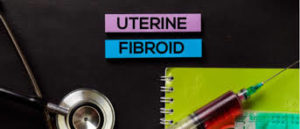Unknown Facts About Fibroid Treatment
 Fibroid treatment options vary depending on the type and size of the fibroid. Most women who develop fibroids before the age of 50 experience no symptoms and may not need treatment. However, they may want to see a doctor periodically to monitor the condition. Checkout uterine fibroid embolization houston for more info. A doctor will perform pelvic ultrasounds to detect any changes in the growth of the fibroid. Fibroids can also be surgically removed.
Fibroid treatment options vary depending on the type and size of the fibroid. Most women who develop fibroids before the age of 50 experience no symptoms and may not need treatment. However, they may want to see a doctor periodically to monitor the condition. Checkout uterine fibroid embolization houston for more info. A doctor will perform pelvic ultrasounds to detect any changes in the growth of the fibroid. Fibroids can also be surgically removed.
Another treatment for fibroids is called uterine artery embolization (UFE). In this procedure, a catheter is inserted into the uterus to deliver agents directly to the uterine fibroid. These agents block the blood vessels that feed the fibroid, which eventually shrinks the fibroid. Another type of treatment is focused ultrasound, which uses high-energy ultrasound waves to destroy the fibroid. A woman can also have a hysterectomy to remove the fibroids and prevent them from returning.
Uterine fibroids are a significant health problem among women. They can cause heavy menstrual bleeding, fatigue, anemia, and even infertility. In some cases, they can also cause complications in pregnancy and miscarriage. These complications are often disproportionately experienced by women of color, with 25% to 77 percent of African-American women suffering from fibroids by the time they reach the age of 50. Fibroids are a growing concern for women and have become a major issue in public health.
Fibroid treatment services may involve a laparoscopy, a procedure that involves placing a slender telescope in the groin crease and passing a small catheter through the uterus. This allows the surgeon to see the uterus and the surrounding tissues in 3-D. The doctor can then use a special instrument called a morcellator to remove the fibroid. Typically, the surgery takes one to two hours and patients can resume normal activities within a few days.
Depending on the stage of your fibroid, a physician may suggest a number of treatments to minimize the symptoms and eliminate the risk of recurrence. These treatment options may include medication, ultrasound, and even surgery. It is important to consult a fibroid expert to determine the best course of action.
Fibroid treatment may also include the use of a hormonal implant called an IUD. This device releases a hormone that can help the fibroids stop bleeding. This procedure is generally performed during an office visit. Another procedure, known as a myomectomy, removes the fibroids while preserving the uterus. This option is ideal for women who plan to have children in the future.
Patients may choose a more permanent treatment for their fibroids, including a hysterectomy. While the surgery may sound like a drastic step, many women choose it as the best treatment for their symptoms. This procedure can stop menstrual bleeding, relieve pelvic pressure, and improve frequent urination. However, women who undergo a hysterectomy must note that the procedure also reduces fertility.
Contact Info
Access Vascular Health: Michelle Maneevese, MD
5151 Katy Freeway Suite 170 Houston, TX 77007
Phone No. : 832-981-5781